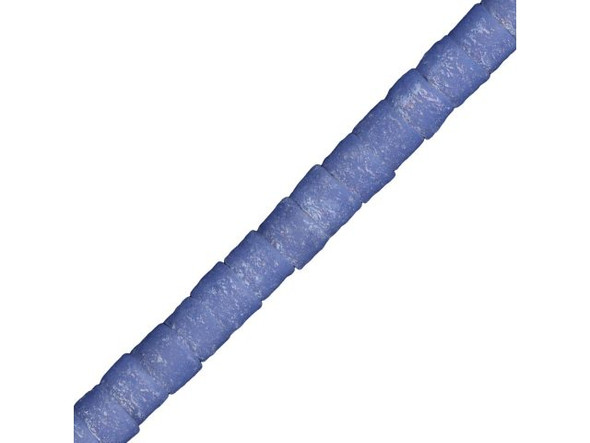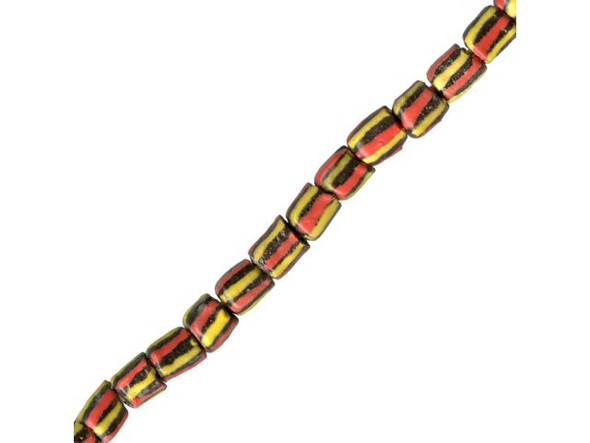Description
The technique of making powder glass and other recycled-glass beads by hand has been used in Africa for centuries.
- First, molds are created out of clay.
- Glass is chosen by color and crushed by hand into a material called the "fritt." For recycled glass beads, the glass isn't always crushed completely into a powder.
- The molds are often dipped in water and treated with kaolin clay to prevent sticking.
- A cassava stalk is often placed in the center of each mold and the rest of the mold is filled in with the "fritt." When fired, the stalks burn away leaving a hole in each bead.
- The molds are baked in a kiln hot enough to make the glass fuse together. From experience the beadmakers know how long to fire the molds, and can judge the temperature by the color of the flame.
- After firing the molds are removed. The beadmaker uses an awl in one hand while moving the mold with the other hand, spinning the gather of glass around to shape it. They then flip it over to shape the other side.
- Shaping and polishing is also done on a stone using sand and water.
- Beads are sometimes oiled to bring out their natural shine.
- Finally, it's off to the market.
See Related Products links (below) for similar items and additional jewelry-making supplies that are often used with this item.
Details
Sold by: |
strand |
Color: |
Gray |
Size: |
Approx. 7-8x11-13mm |
Theme: |
African/ Trade |
Country of Origin: |
Ghana |
Hole Size: |
2.0-3.0mm |













